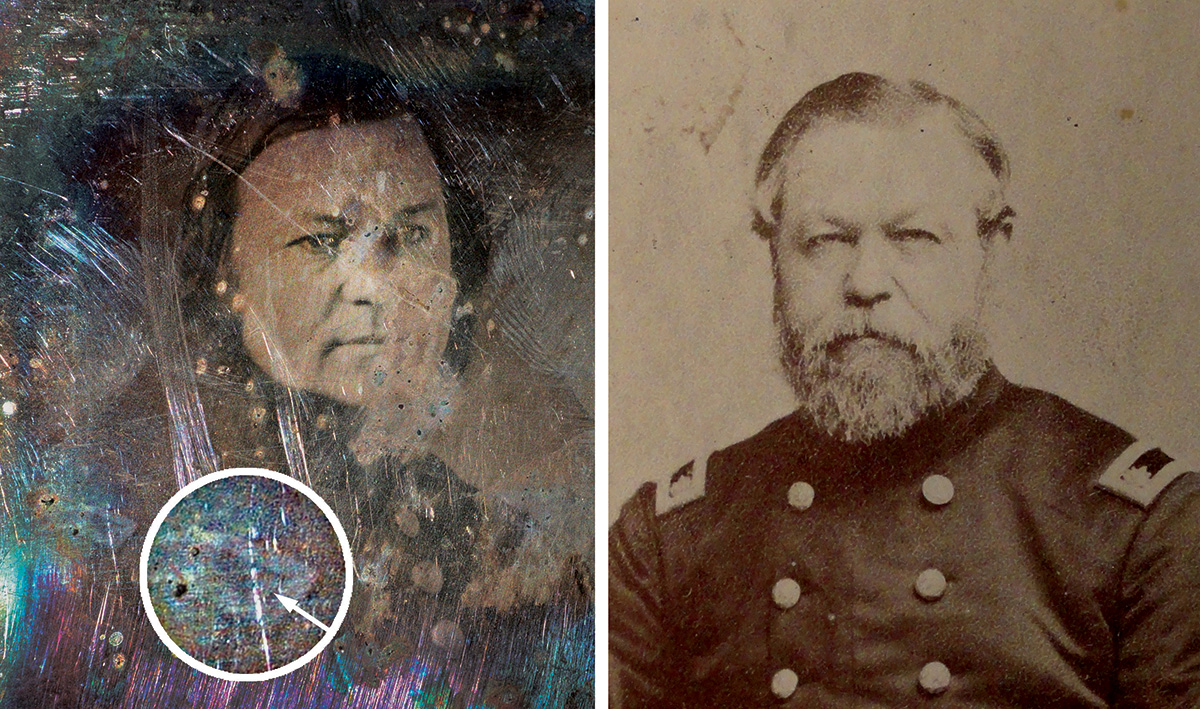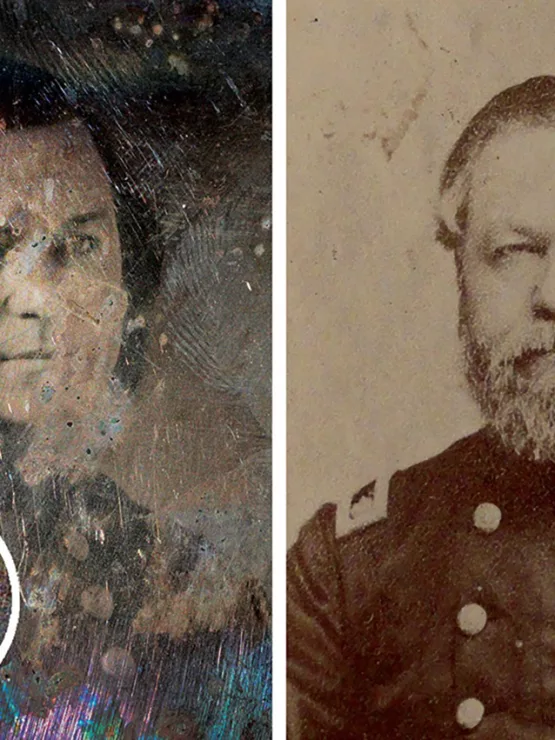
You never know what you will find at the Detre Library & Archives. I was in the process of conducting genealogical research for a story and came across an envelope of unidentified photos in the McClelland Family Papers and Photographs. The archive was donated to the Historical Society of Western Pennsylvania (now the Heinz History Center) by Sarah McClelland and Rachel Sutton McClelland, daughters of Dr. James H. McClelland Jr., one of the founders of Shadyside Hospital. Among the photos, a daguerreotype that was damaged but with the features still recognizable, looked familiar.
I was researching my Scots-Irish ancestors, the Black family. Elizabeth Thomson Black was the daughter of Rev. Dr. John Black a well-regarded minister and scholar who taught at the Western University of Pennsylvania (now the University of Pittsburgh). She was the mother of Dr. McClelland and thus, a lot of information about my ancestry wound up in the McClelland archive. (I’m directly descended from Rev. Black’s older brother Robert). In 1843, Elizabeth’s younger sister Martha Anne Black married recent West Point graduate Thomas Jackson Rodman (1816-1871), who later developed a revolutionary casting process for large artillery (see Western Pennsylvania History, Winter 2015-16). The two met while Rodman was serving at Pittsburgh’s Allegheny Arsenal in Lawrenceville.
Though I was familiar with extant photos of Rodman with a full beard, the facial features and the uniform suggested that the stocky, beardless soldier in the daguerreotype was most probably Rodman. And, it was found in the correct family archive. The daguerreotype also reveals a lieutenant’s bar in the shoulder strap. Rodman was made a first lieutenant on March 3, 1847, which helps date the photo. If Rodman had this photo taken during the Mexican War in 1848, this would make the photo one of the oldest (if not the oldest) photo portraits of a Pittsburgh resident in existence.

But, there is no accompanying written information about this previously unidentified photo and thus, no indication of exactly when it was taken. Thomas Rodman remained a first lieutenant until his promotion to captain on July 1, 1855. Therefore, the daguerreotype could have been taken at any time during his eight years as a first lieutenant. Also, though there was a major uniform change for the U.S. Army in 1852, the jacket didn’t appreciably change. Still, the jacket is consistent with other Mexican War era uniforms. Because wartime creates a need for soldiers to record their likenesses, it’s a good bet that the photo was taken c. 1848. But again, it’s only a hypothesis. Possibly more digging in this archive or in another archive with Rodman’s correspondence might lead us to a record of the exact date of this photo.
The daguerreotype is small (2.75 x 3.25 in.), but its subject had a large influence, which is on display when you enter the History Center’s Great Hall. The Rodman cannon replica always makes a big impression.
Tom Powers is the president of the Lawrenceville Historical Society.

